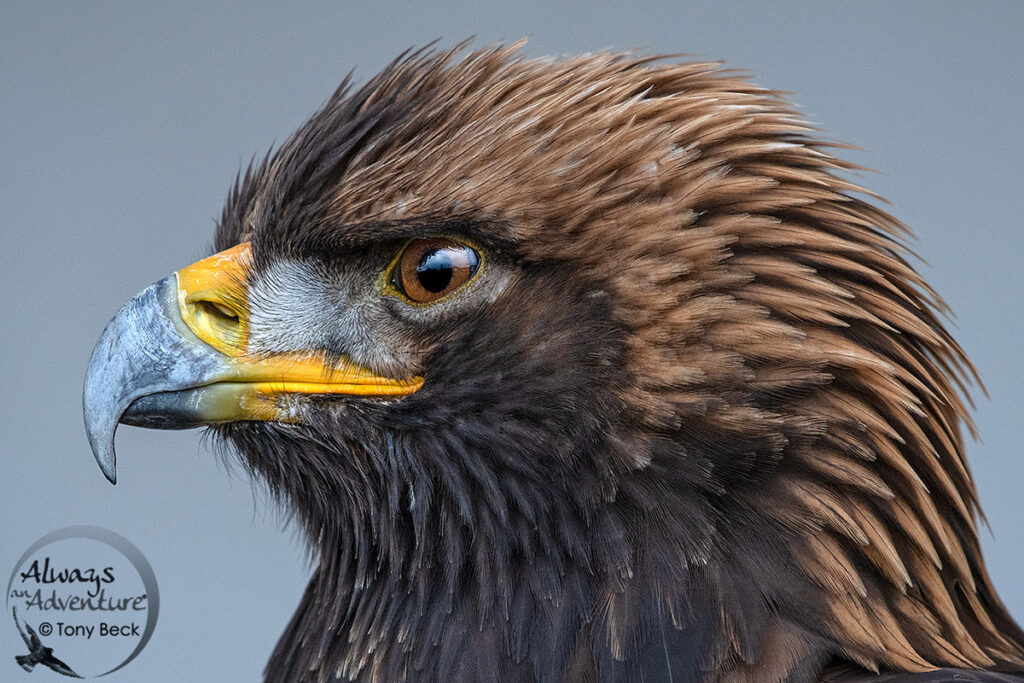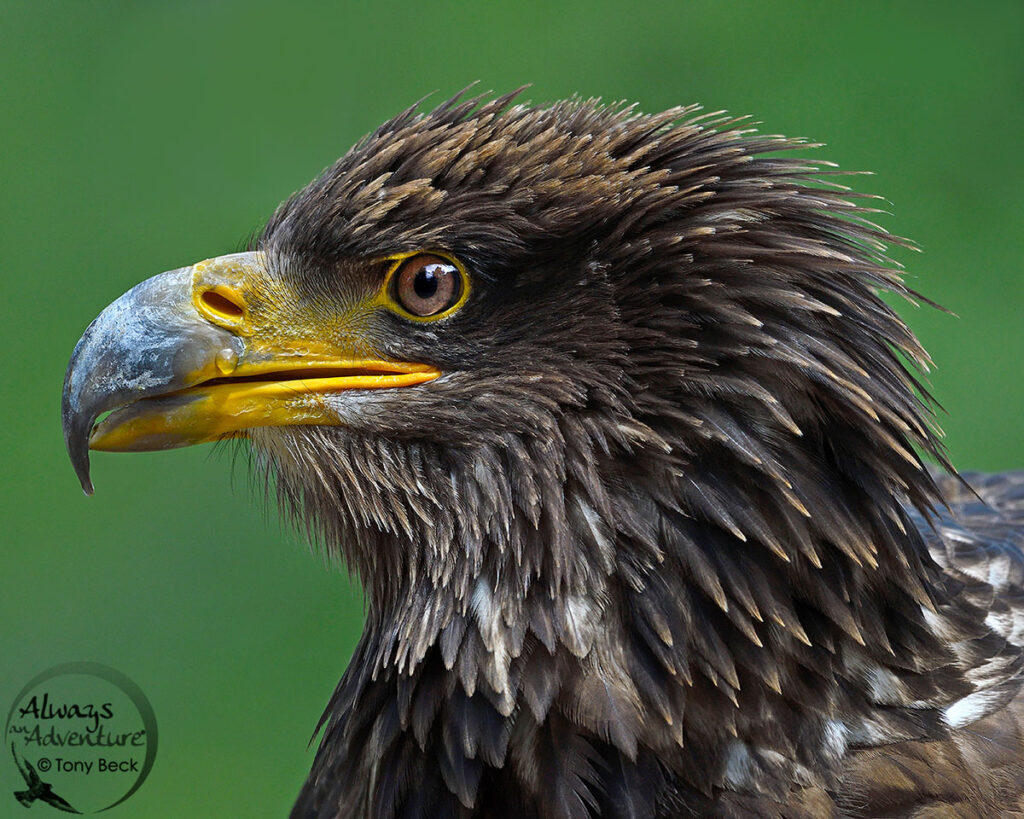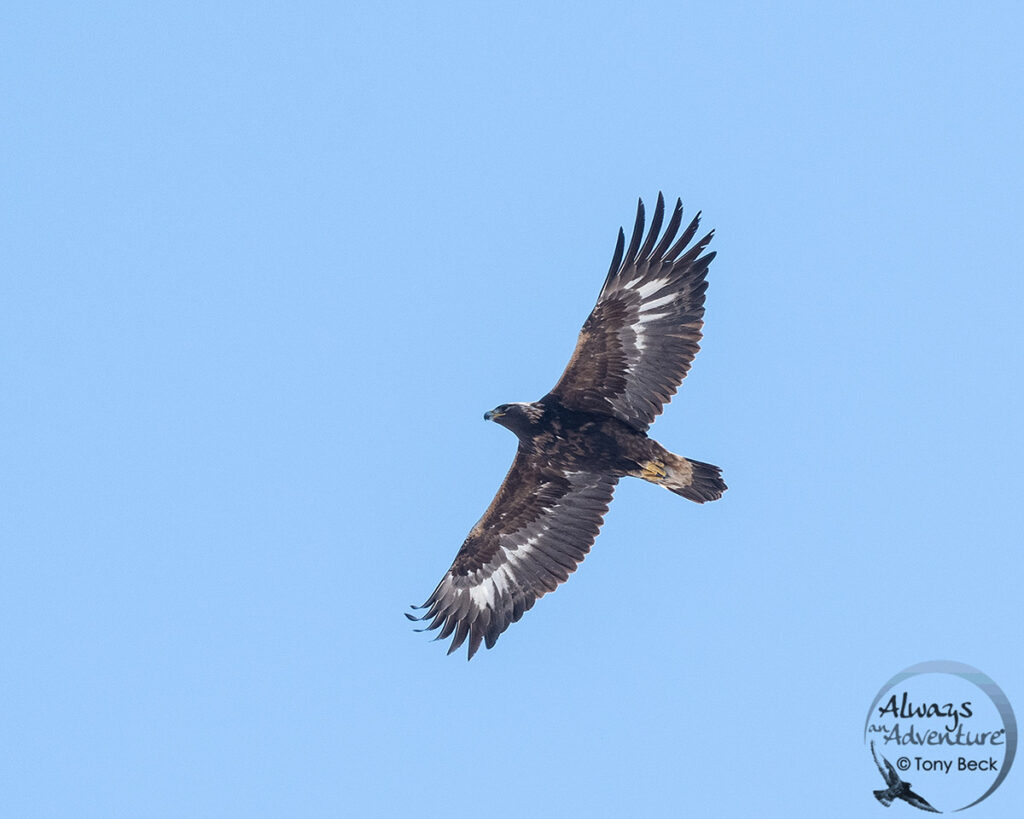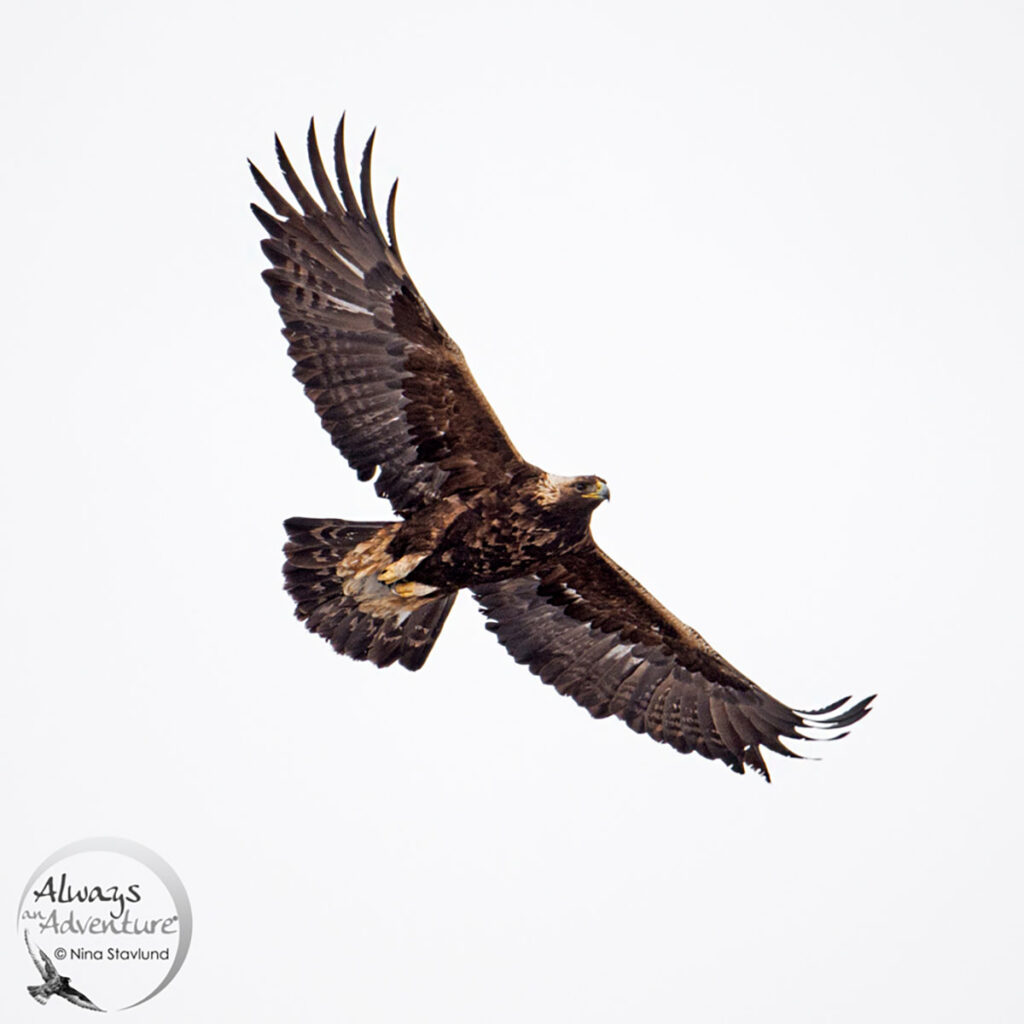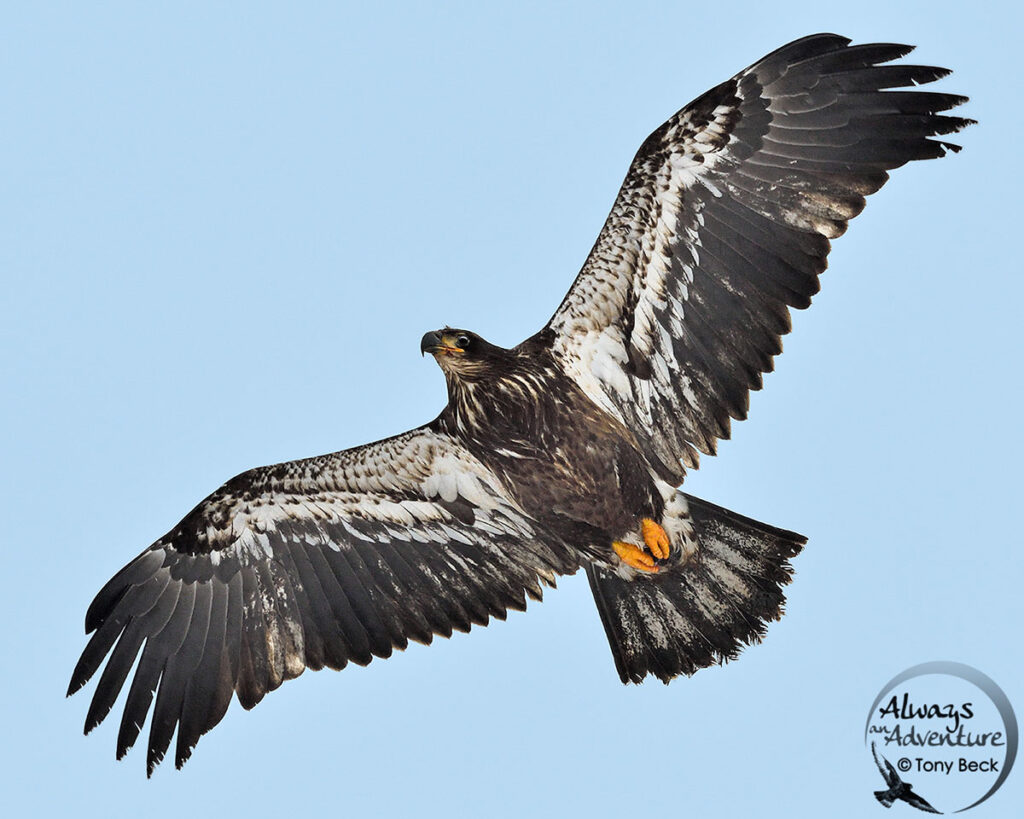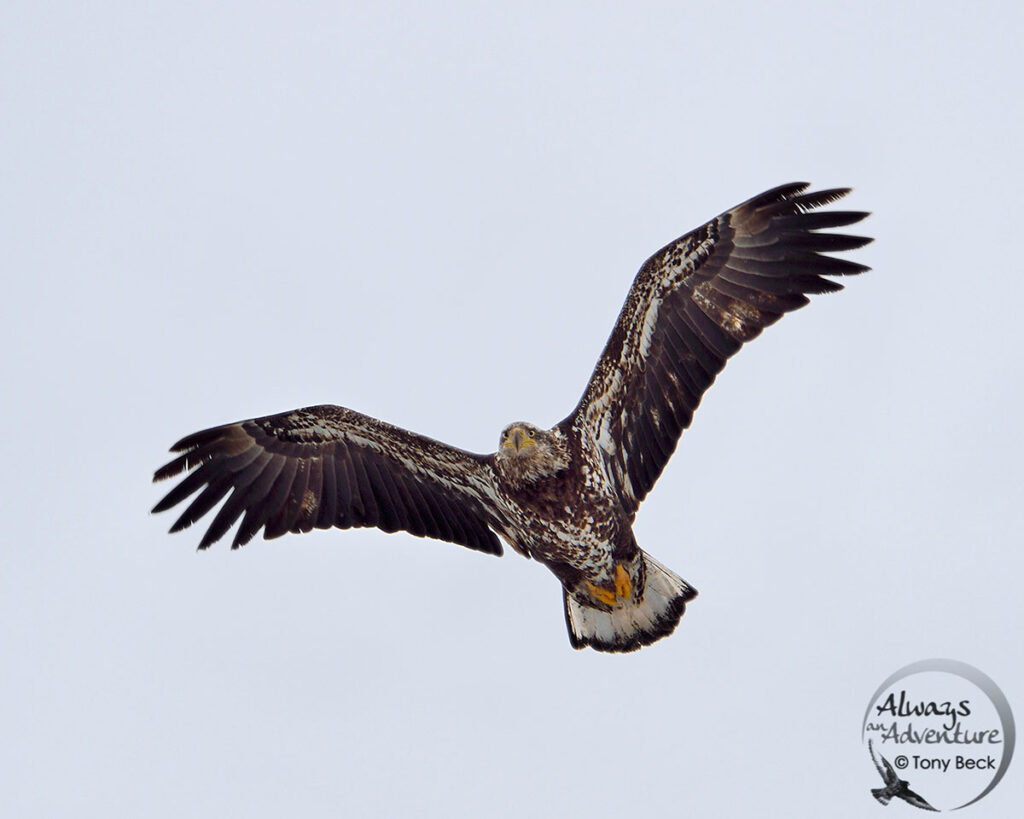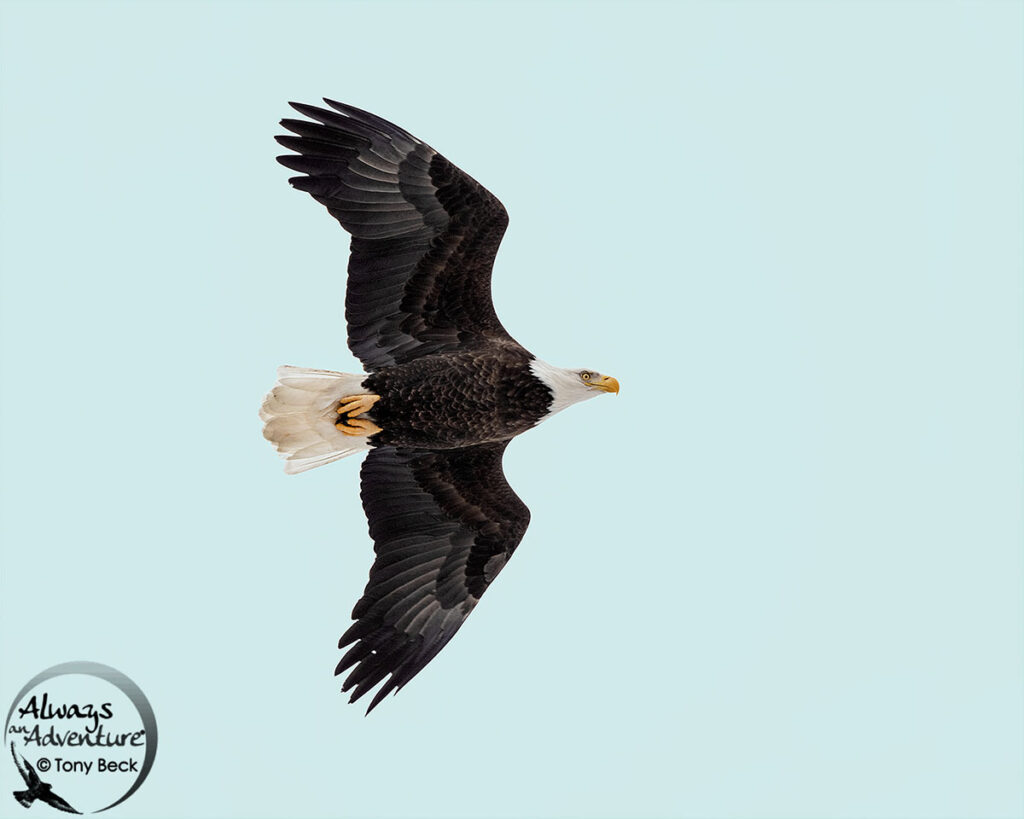While many birds are declining in Canada, eagles stand out as one of the few success stories. Here in Ottawa, Bald Eagles were once considered very rare. As a teenager, I’d be lucky to see one each year. However, today, they’re increasingly more common and can be observed throughout the year.
Golden Eagle portrait – Note the head shape, especially the smaller bill. Also significant is that all ages of Golden Eagles have a tawny colour on their nape.
Golden Eagles in Eastern Canada are also more regular today than back in my youth. They can now be found through migration, especially following large flocks of migrating waterfowl. In winter, a few patrol the hills of Quebec, sometimes in concert with Bald Eagles.
First year Bald Eagle portrait – Note how the bill is much larger on this bird. As they get older, they increase the amount of white on their head.
Throughout my travels, Eagles can be shy and difficult to approach for a clean photo. However, they occasionally ignore humans, especially when feeding on carrion or recently killed prey.
Eagles are also common in raptor collections. Falconers and zoo keepers sometimes pose with tame birds for photographers.
Many local bird enthusiasts have recently asked me how to tell them apart. Their inquiry has inspired this article.
First year Golden Eagle in flight – Noting the distribution of white on any local eagle should confirm an identification. This young Golden Eagle shows the pale undertail and the white at the base of its flight feathers. Note how dark the wing linings are.
Although the white head and tail of an adult Bald Eagle is distinctive and unmistakable, identifying a juvenile or immature eagle requires some awareness. To complicate matters, it takes Bald Eagle upwards of 5 years to reach full adult plumage, and there’s a great degree of variation amongst younger individuals.
Like any bird identification challenge, the first feature to note is the size and shape. All eagles are big. But, the Bald Eagle is usually slightly bigger than a Golden. More importantly, the head and bill of a Bald is larger than a Golden. If you can see the bird in good light, Golden Eagle always has a tawny/golden nape (back of head). Keep in mind that many immature Bald Eagles will have some pale or brownish areas on its head.
Subadult Golden Eagle in flight – ©Nina Stavlund – this older Golden Eagle (near adult) reveals much less white in the flight feathers. Note also how small the head is compared to the body.
Noting the distribution of light tones on the underside is a good way to determine species. Young Bald Eagles are highly variable depending on age. However, if you see any white on the wing linings (the underwing covert feathers), you’ve got a Bald Eagle. Golden Eagle never has much white on these parts. But, during its first two years, they can have white at the base of their primaries, and a limited amount of white at the base of its tail.
In its full adult plumage, a Golden can appear all dark.
First year Bald Eagle in flight – This Bald Eagle still retains much of its juvenile plumage. While the belly and breast are typically dark at this stage, they have an abundance of white on the wing linings. The tail has a reduced amount of white compared to older individuals.
Another character to watch for is their flight shape. Besides their larger head, Bald Eagles soar with their wings flat – straight out. Golden Eagles soar with a slight dihedral (wings curved upward). They’re often recognizable from their smaller head, even at extreme distances.
Second/third year Bald Eagle in flight – After its first year, Bald Eagles get more white on their belly. As they get older, the bird becomes paler overall with an increase of white on the head and tail. Full adults are all dark with a white head and tail.
Whatever way you decide to enjoy the great outdoors here in Canada, any time you spot an eagle is certain to add much excitement to your day. It’s even more thrilling when you’re able to capture a dramatic image of these majestic creatures.
Adult Bald Eagle – adult Bald Eagles are easy to identify. Beside their enormous size, the white head and tail on a dark brown body makes them unmistakable, even if seen at a distance.
© Tony Beck 2021
About Tony Beck
Tony Beck is an award winning, Nikon Ambassador, freelance photographer based in Ottawa. He teaches birdwatching and nature photography courses. Follow Tony’s adventures at www.AlwaysAnAdventure.ca



